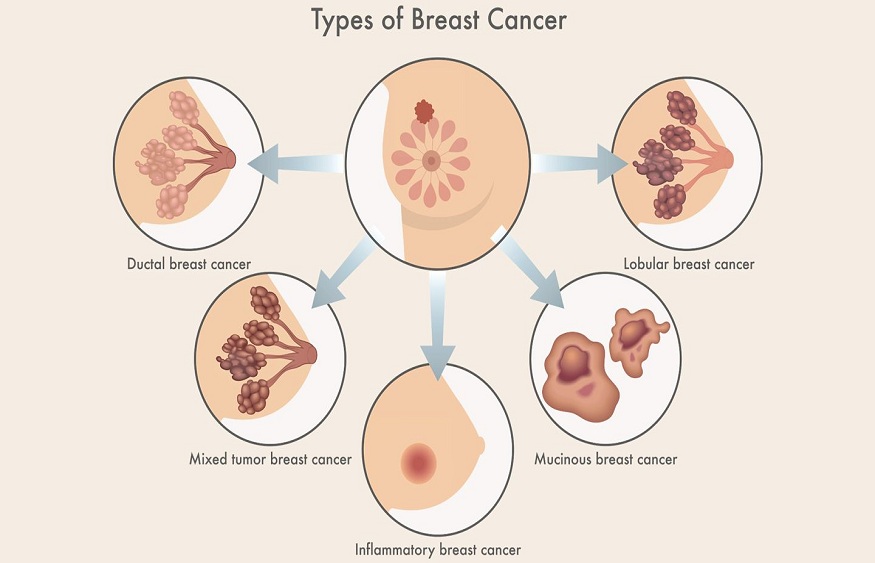Different Types of Cancer
The word “cancer” can often evoke fear, as it is not just one disease but a group of diseases. These diseases can affect any body part, each with its characteristics. This article provides an overview of some common types of cancer while examining the symptoms, causes, and treatment possibilities for every kind of cancer to make understanding these diseases easier.
Breast Cancer
For women, breast cancer is the most frequent form of the disease. Symptoms include a lump in the breast, a change in the size or shape of the breasts, or a discharge from the nipple.
There is a wide range of possible causes, although genetics and hormonal shifts play essential roles. Treatment usually entails surgery, chemotherapy, radiation therapy, and hormone therapy.
Lung Cancer
The lungs are the primary target of lung cancer, strongly linked to cigarette smoking. A chronic cough, chest pain, and difficulty breathing could all be symptoms.
Depending on the cancer’s progression, surgical removal, chemotherapy, or targeted therapy may be recommended.
Skin Cancer
Among all cancers, skin cancer is one of the easiest to avoid. It typically manifests as abnormal skin growth, such as moles or lesions.
The sun’s ultraviolet (UV) rays and artificial tanning beds are vital contributors. Treatment options range from early diagnosis to surgical removal, radiation therapy, or topical medicines.
Colon Cancer
Colorectal cancer, another name for colon cancer, begins in the lining of the colon or rectum. Alterations in bowel patterns, blood in the stool, and stomach pain are common signs.
Causes include dietary factors, heredity, and specific medical issues. This type of cancer is treatable through surgery, chemotherapy, radiation therapy, and targeted therapy.
Prostate Cancer
The prostate is a tiny gland in men commonly affected by prostate cancer. Incontinence, blood in the urine, and pelvic pain are all possible symptoms.
The precise trigger is unclear, but age and family history are risk factors. If one of your family members is experiencing this situation, get them through active surveillance, surgery and radiation therapy.
Leukemia
Leukemia is a malignancy of the blood and bone marrow. Signs include lethargy, frequent illnesses, and sudden weight loss for no apparent reason.
Frequently, the underlying cause is unknown but has been linked to both genetic and environmental variables. Chemotherapy, radiotherapy, and stem cell transplantation are all part of the treatment process.
Cervical Cancer
The cervix, the bottom section of the uterus, is the site of cervical cancer. Abnormal bleeding from the uterus and pelvic discomfort are common signs. The most common reason is an infection with the human papillomavirus (HPV). Treatment may involve surgery, radiation therapy, and chemotherapy.
Bladder Cancer
Symptoms of bladder cancer include, among others, the presence of blood in the urine and an increased need to urinate. Cigarette smoking and chemical exposure both increase the danger. Treatment options include surgery, chemotherapy, radiation therapy, and immunotherapy.
Conclusion
The key to early detection and successful cancer management is knowledge about the disease’s symptoms, causes, and treatment options.
Cancer is a complex disease to treat, but learning about the different types of cancer makes it possible to take preventative measures, get prompt medical attention, and contribute to continuing research and awareness initiatives. If you are keen and curious about learning more about women’s health, Germie got you covered!

